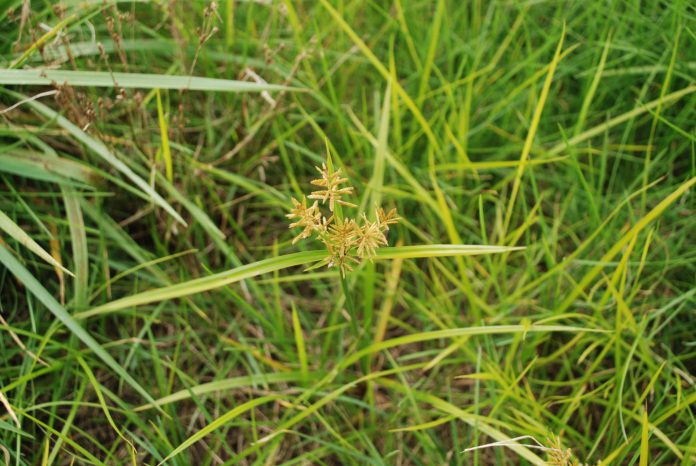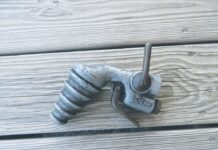With the undeniably wet weather we’ve had since the fall of 2017, we are seeing a crop of weeds that are foreign to us.
These are weeds that love to have their feet wet and can diminish the quality of pasture and hay. One of the weeds we are seeing in spades in Southeastern Ohio is yellow nutsedge.
Yellow nutsedge is a problem in both forage crop fields and in tuff grass and lawns. Controlling this weed will require some work, but understanding how nutsedge reproduces and thrives will help in making control methods a success.
Yellow nutsedge is an issue all over the world but is native to North America and Eurasia. Because of the wide distribution, it is considered one of the worst weeds worldwide.
Habitat
It is commonly found in the North Central and Northeastern United States, and in Ohio, it is in marsh and riverbank areas and thrives as a weed in agriculture fields and even lawns.
Because of its tolerant nature, yellow nutsedge can be found in many soil types and draining varieties, from poorly drained lowlands to well-drained upland areas.
Needless to say, this weed is a nasty competitor all throughout the world, and throughout many soil types and structures.
Nutsedge differs from other plants in a variety of ways. It is neither a board leaf nor a grass, but a sedge, with a triangular stem and shallow tubers underground.
Reproduction
This plant has shiny yellow to greenish-colored leaves, and golden to brown colored flowers, which are rarely the cause of reproduction of nutsedge; generally, reproduction is caused from those shallow tubers and rhizomes mentioned earlier.
The leaves have a prominent mid-vein, which can be described as having a waxy surface, and are arranged in threes to the base of the plant.
Young yellow nutsedge can often be confused for other annual grasses or purple nutsedge until it becomes more mature. Purple nutsedge has darker leaves and flowers that range in shade from red to brown, and back to purple.
Yellow nutsedge germination starts at the beginning of May and grows actively during the heat of summer and into autumn.
Because of its heat-loving tendency, nutsedge can quickly outcompete cool-season perennials that are dealing with summer slump during those hot months.
Fortunately, frost does kill nutsedge, but underground tubers will survive over winter and can be productive up until three years later.
One of the most troublesome statistics regarding yellow nutsedge is its impact on agricultural fields. Due to the competition for water, light, nutrients and space, and its allelopathic, or toxic root suppressing nature, having as few as 10 yellow nutsedge plants per square foot of crop ground can decrease corn yields by 8%.
When you are considering an already low-yield year due to weather constraints, losing another 8% can be a major factor on your bottom line.
To correct this problem, things to consider would be correcting drainage issues, shallow cultivation and letting fields sit fallow for a time.
Weed control
The best control of nutsedge and other weeds is by growing a vigorous and healthy stand of desirable plants. Do this through, nutrient management, proper mowing height and no-till practices when reseeding.
To control nutsedge with herbicides, it’s recommended to use a chemical that contains halosulfuron or sulfentrazone.
Broadleaf herbicides will not work for these weeds, as they are sedges. If chemical control is best for you, treating in late spring to early summer is advisable, because plants are early into growth stages and no tubers have been produced yet, so control is likely to be reached.
If you are treating weeds like yellow nutsedge and others, call your county Soil and Water Conservation District, or Extension agent.
Those agencies are happy to help, give advice and recommend treatment plans. Advice is free!
For more information on yellow nutsedge, Ohio State University Extension’s Weed Control Guide and Purdue University Extension are the references used in this article.














Nutsedge has been a huge problem this year in the North part of Texas and I totally agree it’s because of all the rain earlier in the year.
Samantha